Japan Railway
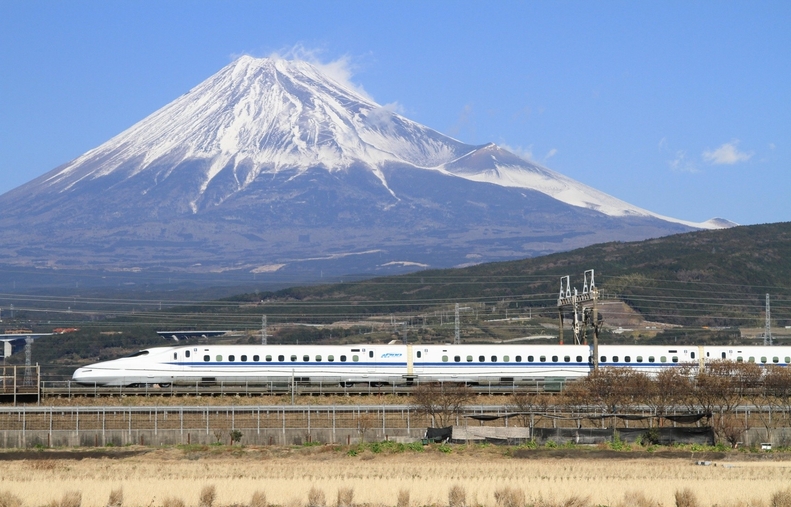
For an island country like Japan that does not occupy a large area, the railway system is quite developed, and the operating tools connecting major cities basically rely on railways. Japanese railways are known for their punctuality and high safety.
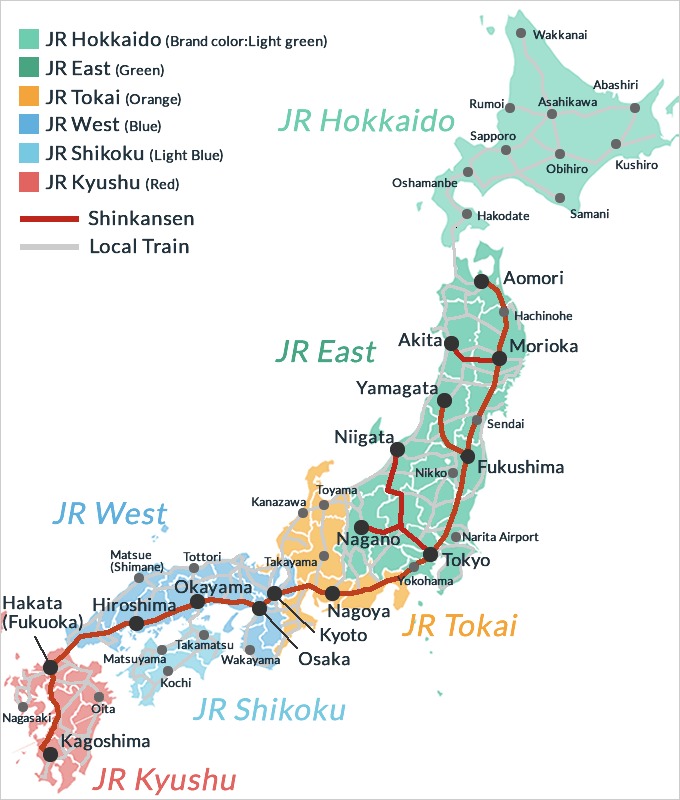
Railway Company
The entire Japan railway line covers the entire territory of Japan like a spider web, and there are many types of railways and operating companies, mainly divided into [JR], [Private Railway], [Subway], and [Streetcars]. Some routes span the whole of Japan, and some only run in certain major cities. Therefore, to ride Japanese trains correctly, you must first know their types and differences.
There are some special railway routes. [JR] and [Subway] and [Private Railway] will share the same railway and platform. Japan will call it "direct operation". For example, there are more than 10 subways and JR in Tokyo. Lines and other private railway lines run through.
Japan Railway (JR, Japan Railway)
Originally a Japanese national railway, it was later privatized and split into seven railway companies: JR Hokkaido, JR East Japan, JR Tokai, JR West Japan, JR Shikoku, JR Kyushu and JR Cargo. In addition to general railway lines (incoming lines) and Shinkansen, JR regional companies also operate general buses and highway buses. E.g:
- All Shinkansen (Tokaido, Sanyo, Kyushu Shinkansen, Hokuriku, Joetsu Shinkansen, Tohoku, Yamagata, Akita Shinkansen)
- Tokyo's Yamanote Line, Chuo Line, Keiyo Line, Keihin Tohoku Line
- N’EX Narita Express in Tokyo, Kanto
- Kansai's Osaka Loop Line, Kanku Express, Kanku Limited Express "Haruka"
Examples of JR: Limited express train "N'EX" connecting downtown Tokyo and Narita Airport; "Haruka Kanku Limited Express" and "Kanku Express" connecting downtown Osaka and Kansai Airport; Yamanote Line and Chuo Line which are important in Tokyo ; The Shinkansen connecting Tokyo, Nagoya, Kyoto, and Shin-Osaka are all 【JR】!
There are many routes on the Shinkansen. In addition to the "Tokaido-Sanyo Shinkansen" that connects Tokyo and Hakata, the "Tohoku Shinkansen" that connects Tokyo and Hachinohe (Aomori Prefecture), and the "Joetsu Shinkansen" that connects Tokyo and Niigata, which is frequently used by most tourists The Shinkansen, the Nagano Shinkansen that connects Tokyo and Nagano, and the Kyushu Shinkansen that runs in Kyushu (currently the Shin-Yatsushiro (Kumamoto Prefecture) and Kagoshima Central (Kagoshima Prefecture) have been opened). route. There are three types of seats: "free seats", "reserved seats" and "green (first class)".
Private Railway: Japanese private or private enterprises
Mainly connect the railway terminals of various cities and the suburbs. As private railway companies actively cooperate with each other to travel together, private railways or subways of different railway companies may enter the routes of another company and mark them as "direct operation" to make it more convenient for passengers. For tourists, the following routes are more commonly used, for example:
- Odakyu Electric Railway: Odakyu operates three routes from Tokyo to West Tokyo and Kanagawa Prefecture, connecting Tokyo to Kanagawa Enoshima, Kamakura, and Hakone.
- Tobu Railway: The eastern part operates many railway lines to the suburbs and counties north of Tokyo, connecting Tokyo to Nikko.
- Keisei Electric Railway: Keisei operates a route from Tokyo to Chiba Prefecture, including one main trunk line and several branch lines, connecting Tokyo Metropolis to Chiba Prefecture and Narita Airport
- Keikyu: Keikyu connects Tokyo with Yokohama and southern Kanagawa Prefecture. Features that attract tourists: This route takes you to Haneda Airport.
- Nagoya Railway: Meitetsu operates a very extensive railway network that runs around the famous old houses and connects Aichi Prefecture, Gifu Prefecture and Chubu International Airport.
- Kintetsu: The largest private railway company. Kintetsu operates a wide rail network, covering the South Kinki area, serving counties and cities including Osaka, Kyoto, Nara, Ise, and Nagoya.
- Nankai Electric Railway: Nankai’s railway network is located in South Osaka and Wakayama Prefecture. Features that attract tourists: This route can go to Kansai Airport and Koyasan.
- Hankyu Electric Railway: Hankyu operates several routes in Kita-Osaka, connecting Osaka Umeda, Kyoto Kawaramachi and Kobe.
Types of Trains
The types of trains in Japan are particularly detailed. Even the Japanese themselves have laughed at the idea that reading train schedules and fare charts is like reading the mysteries of Seippei Matsumoto and Kyotaro Nishimura. Taking the JR as an example, common trains can now be divided into at least regular, high-speed, express, limited express, and Shinkansen lines.
- Shinkan Line: high speed rail with speeds of 250-300 km/h. It charges a base fare and an express fare.
- Express: stands for Express Express, the fare is the same as Express.
- Express: minimal stops, fastest speed, about 120-130 kilometers per hour. Freight Leasing and Express Freight Collection
- Emergency: parking is less than on express trains and speeds are 90-120 km/hour. In addition to the transport charge, an "emergency charge" - a priority charge - is charged.
- Express: this stands for extreme fast, which is the same as what the Chinese call straight fast. Delivery lease only.
- Fast: parking is slower than normal, speeds are 90 kilometers per hour, and only rent is accepted.
- Normal: Basically stops at every stop. The slowest speed is only 60 kilometers. Rates are "leased" only, i.e., the basic rate.
Shinkansen(日语:新幹線/しんかんせん Shinkansen )
Shinkansen Shinkan Line is the world's first high-speed rail system in Japan, using standard gauge (1435 mm) gauges and is a pure passenger service. Line 1 is the Tokai-do-Shinkan Line, which connects Tokyo and Osaka; it opened on October 1, 1964, before the opening of the Tokyo Olympics. After many years of expansion, nine lines and two short lines are currently in operation. The "Mini Shinkansen" connects Japan's most important cities. Originally developed and operated by Japan's state-owned railways, it was continued by the JR Group after the division and privatization of the national railways, and is currently served by five JR companies - JR Hokkaido, JR East, JR Central, JR West and JR Kyushu.
The Shinkan line includes the Tohoku Shinkan, Sanyo Shinkan, Tokaido Shinkan, Hokuriku Shinkan, Kyushu Shinkan, Hokkaido Shinkan, Jozu Shinkan, Yamagata Shinkan and Akita Shinkan.
- Tokyo, Nagoya, Kyoto and Osaka (Tokai-do Shinkan Line)
- Tokyo Shin-Aomori (Tohoku-Shinkan Line)
- Morioka-Akita (Akita Shinkansen)
- Tokyo, Futakata (Joetsu-Shinkan Line)
- Tokyo and Kanazawa (Nagano Shinkansen Line)
- Osaka Hakata (Sanyo Shinkansen)
- Hakata Kashima Chuo (Kyushu Shinkansen Line)
Shinkansen Train Types
Unlike trains in other countries, a different car type can be used for different model cars, and also with different nicknames, such as: Hope Line (Shinkansen Nozomi), Light Line (Shinkansen Hikari), Ruisho Line (Shinkansen Mizuho), Ruiho Line (Shinkansen Kodama), Shinsha Line (Shinkansen Sakura), Tsubame Line (Shinkansen Tsubame), Hayfeng Line (Shinto) Line (Shinkansen Hayate), Zhu Lu Lu line (Shinkansen Toki), Shinsen line (Shinkansen Tsurugi), Asaoma line (Shinkansen Asama), Hayabusa line (Shinkansen Hayabusa), Nasuno line (Shinkansen Nasuno), Baishima line (Shinkansen Hakutaka), Shanjiang line (Shinkansen Yamabiko), Tsubasa line (Shinkansen Tsubasa), etc. For more detail see below
Shinkansen Mizuho (Mizuho)
The Mizuho runs between Shin-Osaka and Kagoshima Chuo, including the Sanyo Shinkansen and Kyushu Shinkansen sections. Its fastest journey time is 3 hours and 45 minutes, which is 25 minutes faster than the Sakura. The Mizuho is the highest class of train on the Kyushu Shinkansen, so the fare pattern is the same as the Kibo on the Sanyo Shinkansen, but when you ride the Mizuho on the Sanyo Shinkansen, you will have to pay 200-300 yen more than the Kibo. Foreigners who use the Kyushu Rail Pass and a partial version of the JR West Japan Rail Pass are not required to pay an additional fare when traveling on the designated routes (Kitakyushu: Hakata → Kumamoto, All Kyushu: Hakata → Kagoshima Chuo) (when using the JAPAN RAIL PASS, you will be required to pay the full fare, just like the Kibo).
Mizuho does not apply to JR Pass holders.
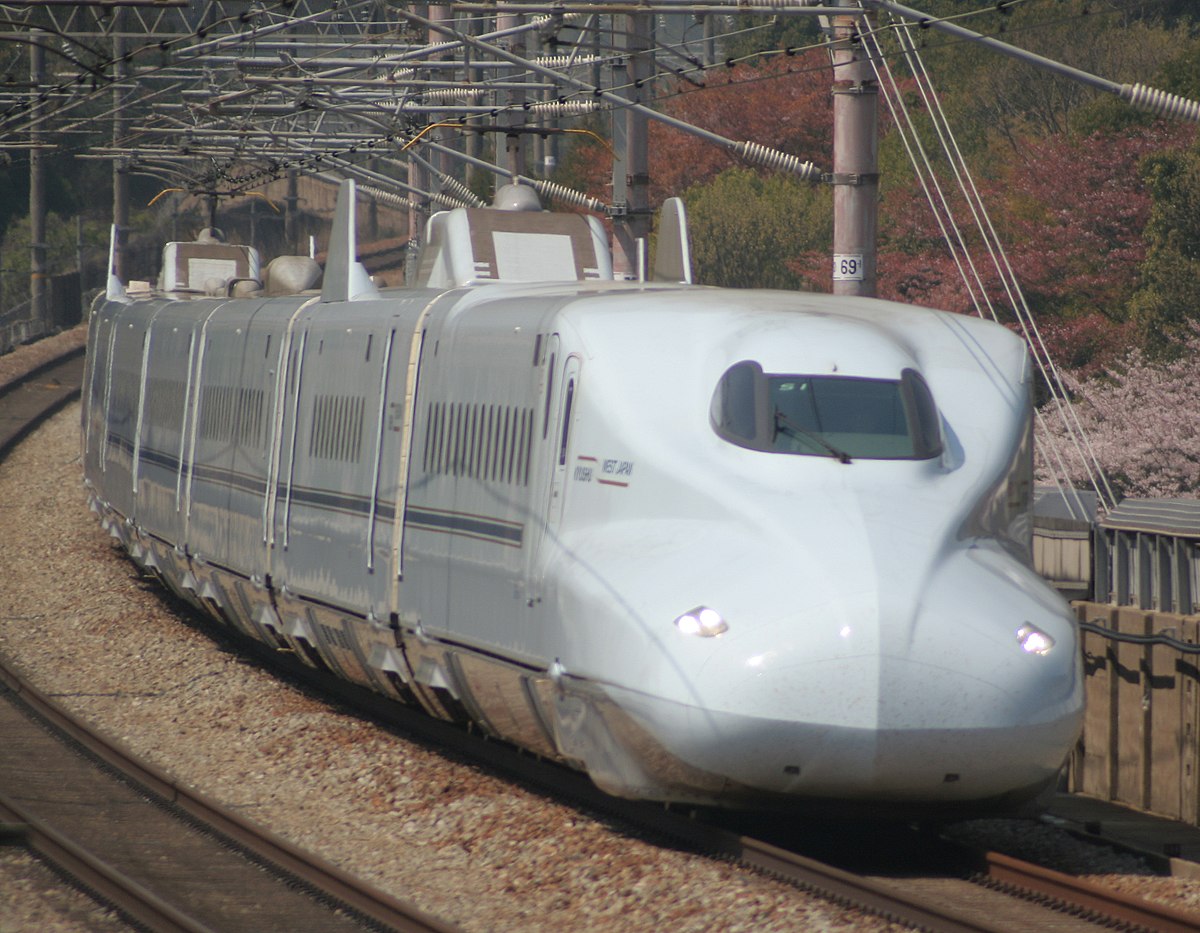
Shinkansen Nozomi (Kibo)
The Nozomi is the fastest train on the Tokaido Shinkansen and the Sanyo Shinkansen (Tokaido/Sanyo Shinkansens). The fastest train to and from Tokyo to Shin-Osaka is the Hope, which takes 2 hours 22 minutes (515 km distance), and the slowest takes 2 hours 37 minutes, most of which are 2 hours 30 minutes, 33 minutes or 36 minutes. The fastest train from Tokyo to Hakata takes 4 hours 53 minutes and the slowest takes 5 hours 19 minutes.
Nozomi does not apply to JR Pass holders.
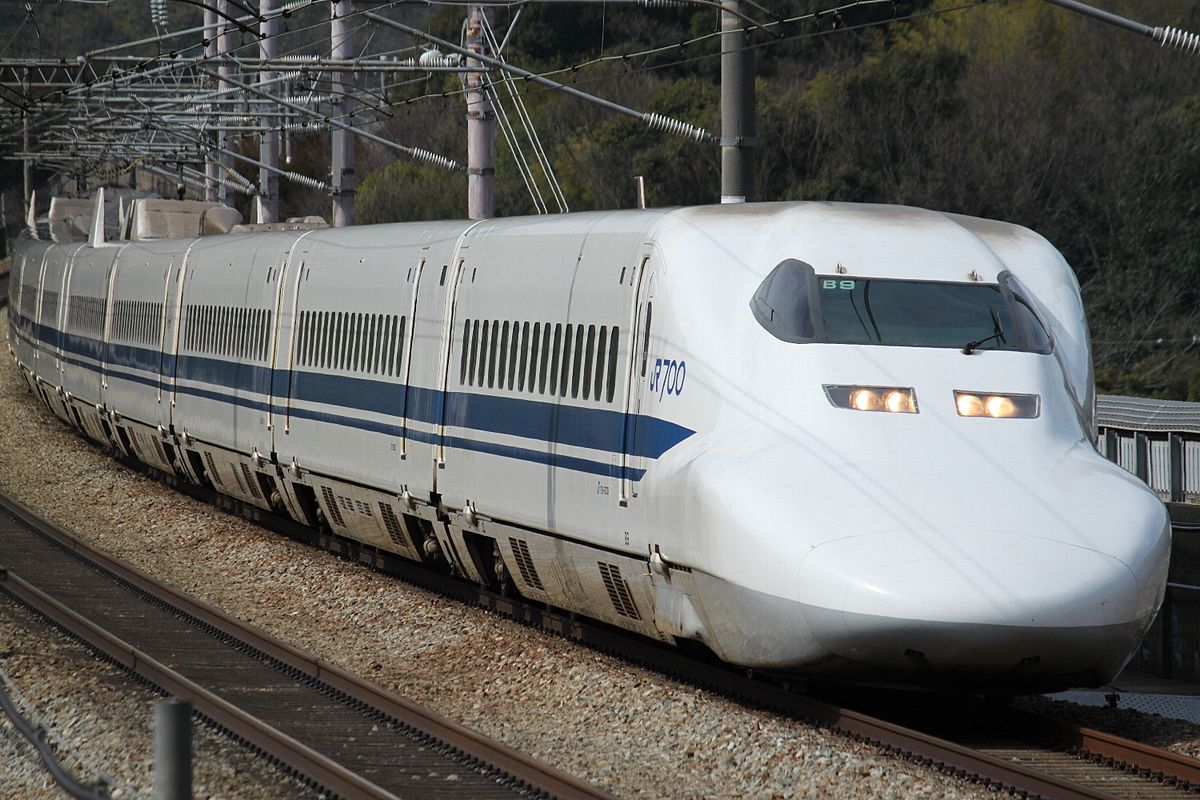
Shinkansen Hikari (Light)
Hikari is the name of the train that runs on the Tokaido Shinkansen and Sanyo Shinkansen. This class of train has been in existence since the Tokaido Shinkansen was officially opened. It used to be the fastest train on the line, but now it has been replaced by the Kibo. There are only two trains per hour. Compared to the Kibo, this train makes more frequent stops.
Hikari applies to JR pass holders.
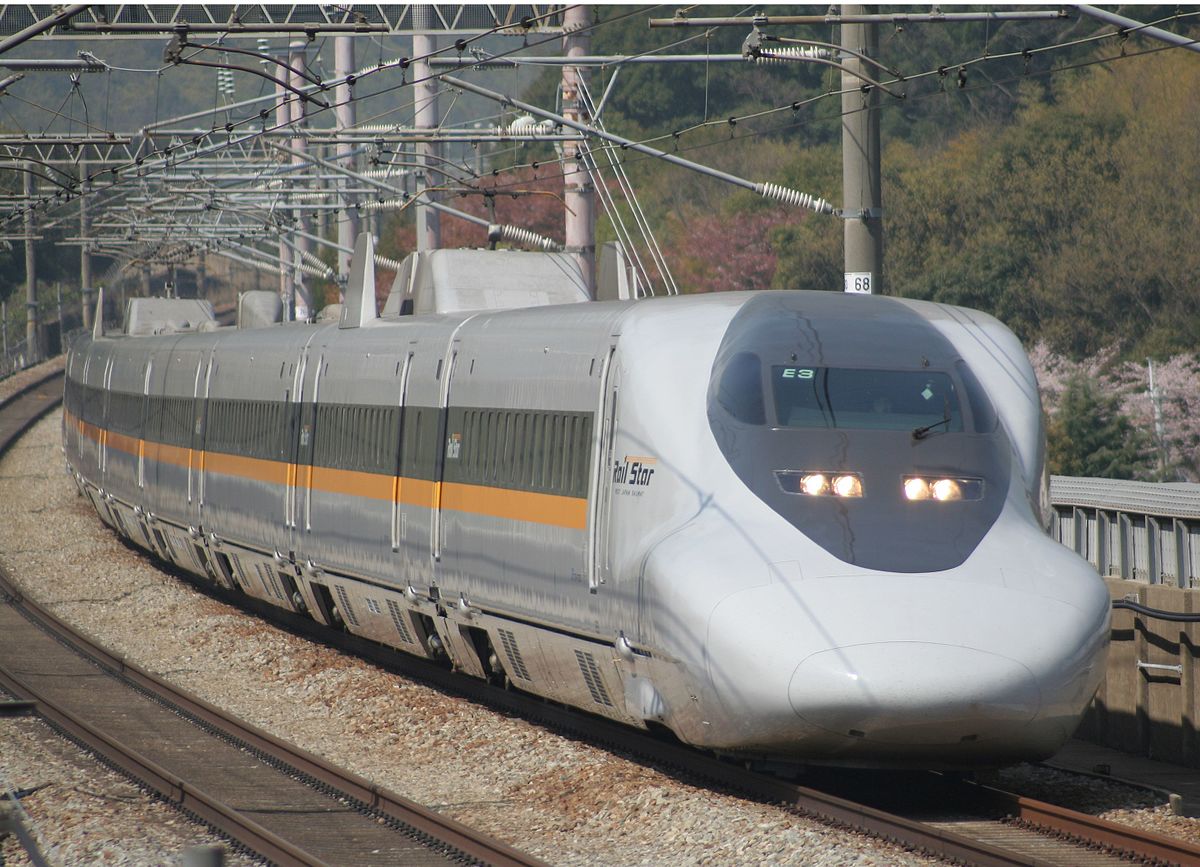
Shinkansen Coach Classes
The Shinkansen is also divided into second class, first class (green car) and first class (GranClass), with second class divided into free seating and reserved seating.
Executive Class(GranClass)
Hayabusa Shinkansen GranClass (Tokyo - Shin-Aomori)
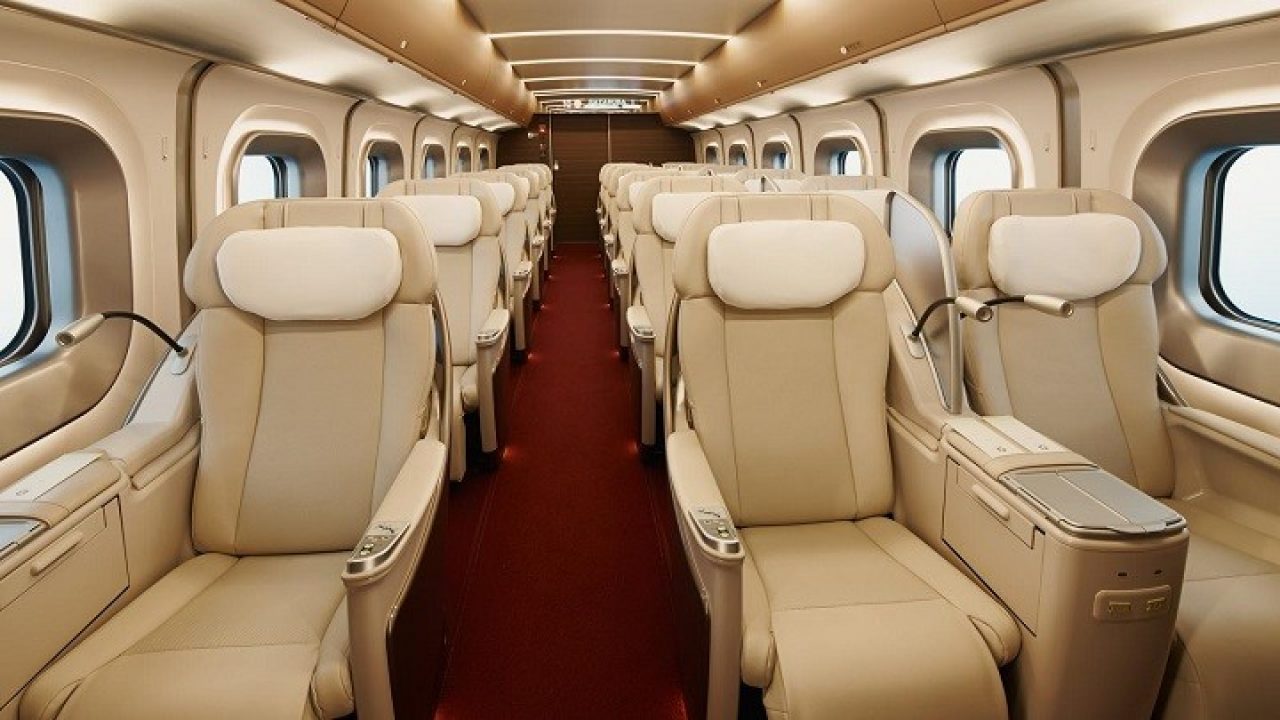
he E5 abbird Super Express model bullet train offers an unparalleled luxury experience. The completely redesigned exterior has colors associated with the Tohoku region of Japan. The interior of the train is lavishly decorated and equipped with the latest technology.
The word Gran, which means "big" in French and Spanish, certainly describes the interior of the train. Each car offers just six rows of seats, three per row, providing "unprecedented quality and spaciousness in train travel". This provides ample leg room to recline in the luxury chairs. The tilt function, as well as the footstool, can be operated using the control panel on the armrest of the seat.
Service is also a point of interest on the Shinkansen Gran Class. Upon entering the train, the attendant will direct you to your seat. You will then be offered amenities such as a menu, blankets, warm towels, slippers (which passengers may take home with them) and an eye mask.
A note inside the menu reads, "Our service reflects the lands we travel and focuses on individual needs so that you can enjoy your trip in your own personal way. We are proud to make your trip a culmination of your journey. "The waiter can be summoned to your seat at any time using the buttons on the armrest.
Menu options include all local cuisine. For example, you can order a bento box filled with locally grown vegetables as well as fresh apple juice produced in Aomori. Other options include beverages, snacks, alcoholic beverages and western lunches. All food and beverages are provided free of charge.
Food and drink will be provided once the train departs from the station. After the meal, passengers can relax and enjoy the views of the passing countryside. There are only three seats in each row, and in Gran Class cars, two-thirds of passengers have their own window seat.
First Class (Green)
"Green Car"(グリーン車) is a high class car (actually the Green Car) called a "Green Car" or VIP car. These class cars are only available on Limited Express trains and above, and all seats are reserved. The privilege of the premium class is that the seats are a little more spacious and you can receive cell phone calls in the car. (You are not allowed to use a cell phone inside the train in a regular class car, so you have to go to a special place in the connecting area of the train to use a cell phone.)
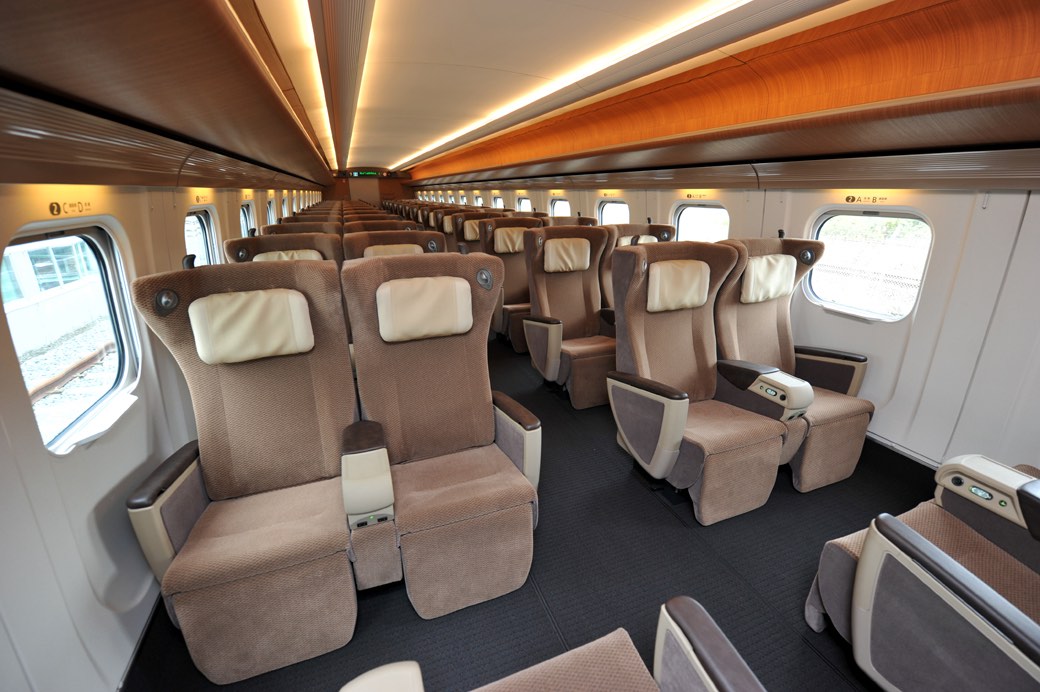
Second Class
There are two types of general class seats: free seating and assigned seating. Free seating means that there are no reserved seats and you can sit in any seat that has not been reserved. Designated seats have a seat number.
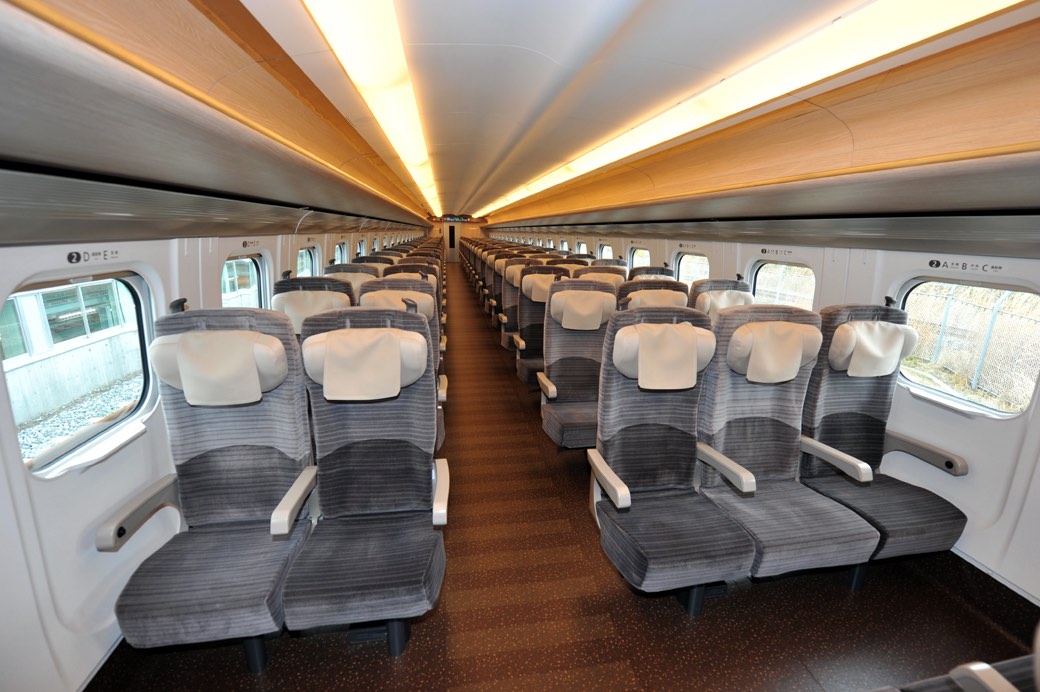
Limited Express
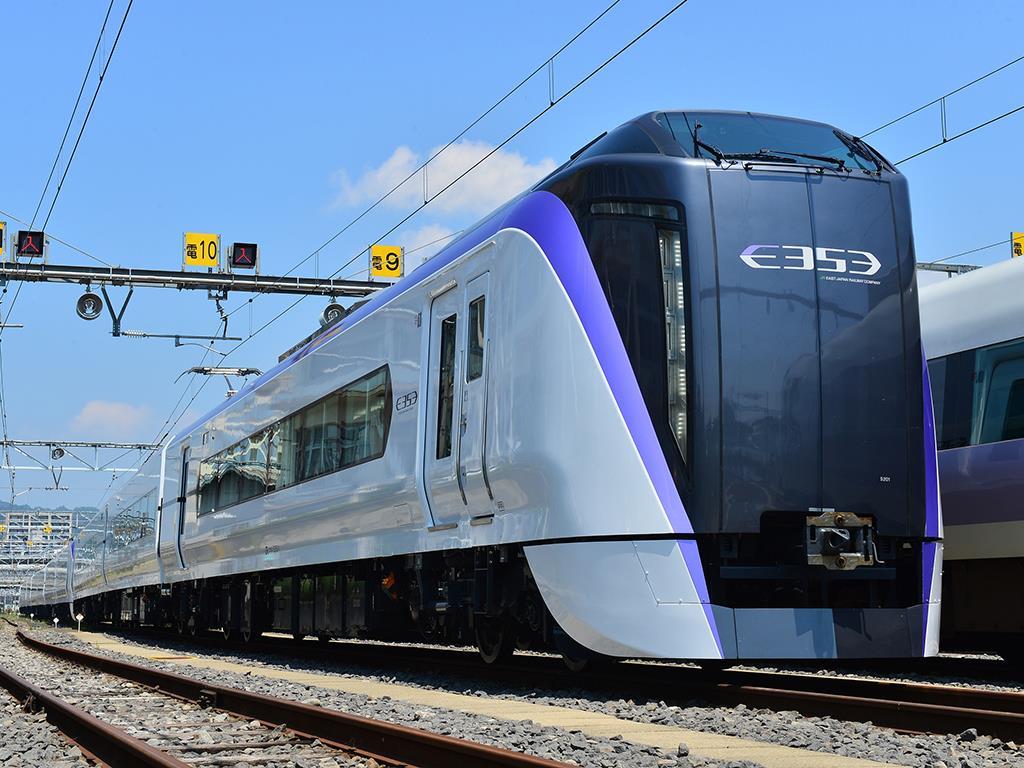
Limited Express trains only stop at major stations and often travel long distances, even across prefectures. Many travelers may need to take limited express trains to travel to distant areas and save time when traveling in Japan. For example, the following is the JR Sunday Thunderbird train that connects Osaka, Kyoto and Kanazawa, the travel time is three hours, although it may not be faster than the inland train, but the advantage is convenience. In addition to this, the JR Limited Express trains that visitors may travel on are.
- From Kyoto, Shin-Osaka, Tennoji→Kansai Airport Kanko Express Haruka "Tele
- N'EX Narita Eccles Press from Tokyo main stations → Narita Airport
- From Osaka, Nagoya → Takayama, Hida Furukawa, Toyama (Tokyu Express "hidebase")
In addition to having fewer stops and the shortest running time, limited express trains usually have compartmentalized seat cars (called reserved seats), non-compartmentalized seat cars (called free seats), or some limited express trains have first-class cars (such as green cars), and charge extra fares (called limited express fare) on top of the standard fare.
Local, Fast
Stop at every stop or most stops
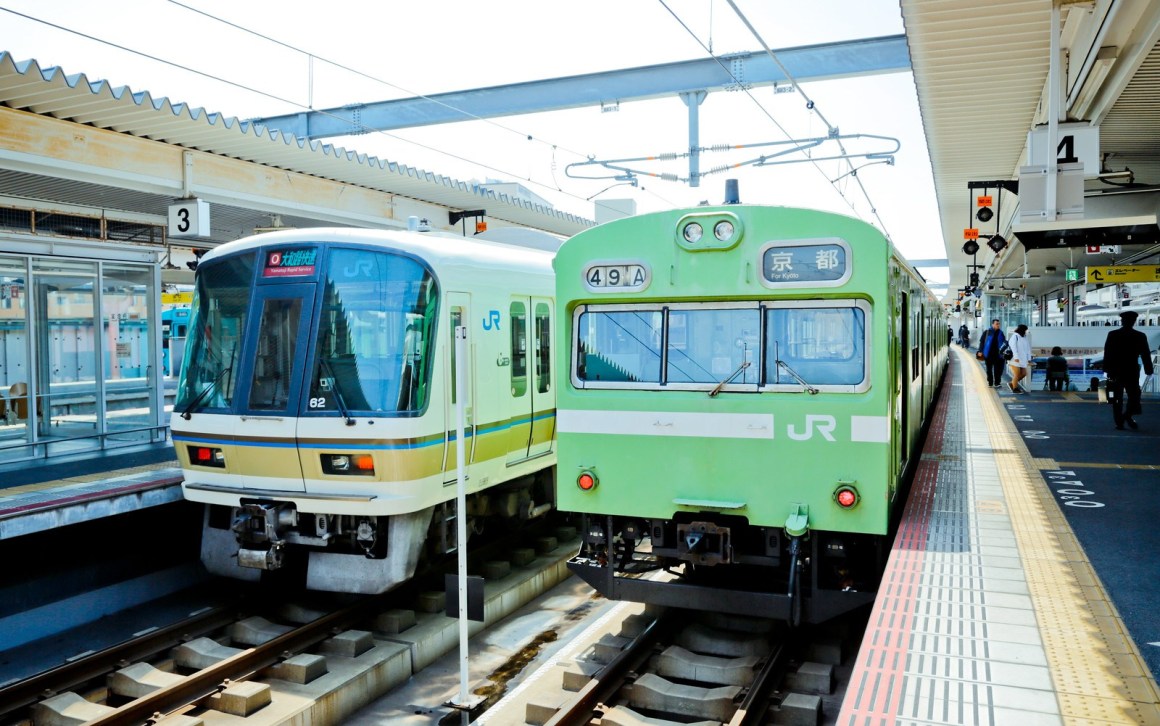
Ordinary trains stop at every station, fast trains do not stop at some stations, and commuter fast trains are fast trains for rush hour commuting. Fares are the same for regular and express trains. For example, JR Yamanote Line in Tokyo and Osaka Loop Line in Osaka are all regular trains that stop at all stations.
As for the fares, all regular and express trains (any kind of express) are calculated based on the same basic fares.
Train Types
Types of Tickets of Japan Railways
There are seven main types of railway tickets in Japan, namely "normal ticket", "IC card", "reserved seat ticket", "limited express ticket", "special car ticket", "one-day pass/week pass" and "discount" Package
Ordinary ticket
"Ordinary ticket" is a ticket that only includes the basic fare. It is also called a "ticket". Normally, ordinary trains, stop trains, express trains, and rapid trains can be boarded on ordinary trains. The basic fare of most railway routes in Japan is based on mileage. The farther you take, the higher the basic fare. However, streetcars and small-scale railway routes often use a single fare, and the basic fare is the same regardless of distance.
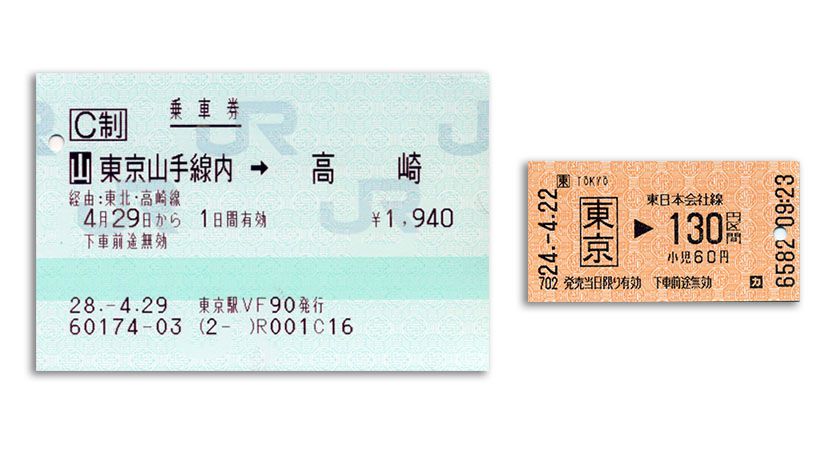
IC card
"IC card" is an electronic proximity ticket card. Passengers can touch the IC card at the entrance and exit gates to make payment inductively, saving the trouble of buying tickets. In Japan, most railway companies have launched IC cards independently or in cooperation with other transportation companies. For example, "Suica" launched by JR East, "PASMO" jointly launched by major transportation companies in the Kanto region, "ICOCA" launched by JR West Japan, "PiTaPa" jointly launched by transportation bureaus and major transportation companies in Kansai, etc. . IC cards can usually only be used to pay for basic railway fares (ordinary tickets), so in most cases it is not possible to use IC cards to directly board limited express trains or Shinkansen.
Suica card and pasmo card
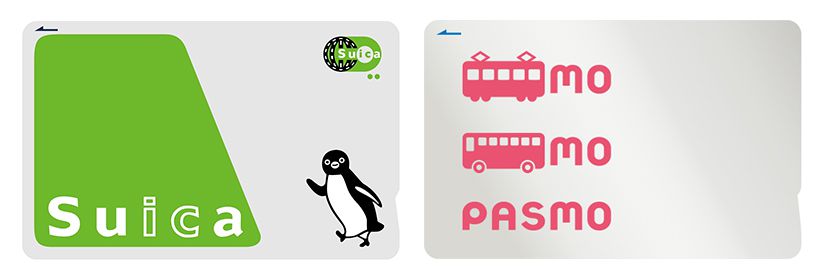
Designated seat ticket
A "reserved seat ticket" is a ticket that only includes the reserved (designated) fee. In Japan, the seat reservation fee is usually not included in the ordinary ticket and must be paid separately. Therefore, passengers who wish to have a fixed seat must purchase a "reserved seat ticket" in addition to the ordinary ticket to take the reserved seat (reserved seat) car. Depending on the operator, route, and vehicle type, part of regular trains, various stops, express trains, and express trains, as well as limited express trains, and most of the Shinkansen services will require the purchase of "reserved seat tickets" or payment Match-seat cars that can only be used for a fee. In addition, some express trains, limited express trains, or Shinkansen have all-car designated seats (reserved seats for all trains), and all passengers must purchase a "reserved seat ticket" or pay a seat fee to board.
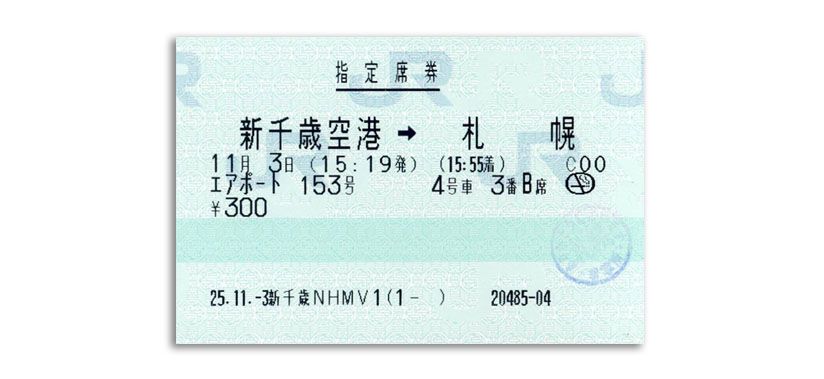
If you purchase a regular ticket and a reserved seat ticket at the same time, some railway operators will combine the two tickets into a single ticket. With this ticket, you can enter and exit the station and take the reserved seat car.
Express Ticket
"Limited Express Tickets" are tickets that include limited express fares. In Japan, limited express fares are not included in ordinary tickets and must be paid separately. Therefore, passengers who wish to take JR limited express trains or private railway limited express trains that require limited express tickets must purchase "limited express tickets" in addition to regular tickets. Generally, "limited express tickets" are divided into "non-reserved seat limited express tickets" and "reserved seat limited express tickets". "Limited seat limited express ticket" is a limited express ticket that does not include seat reservation fees and can only be used in unreserved (unreserved seat) carriages; "Reserved seat limited express ticket" includes seat reservation fees, and you can ride on reserved seats (reserved seats) Limited express ticket for the carriage. In addition, the "Shinkansen limited express ticket" required to board the Shinkansen includes the "Shinkansen non-reserved seat limited express fare" or the "Shinkansen reserved seat limited express fare".
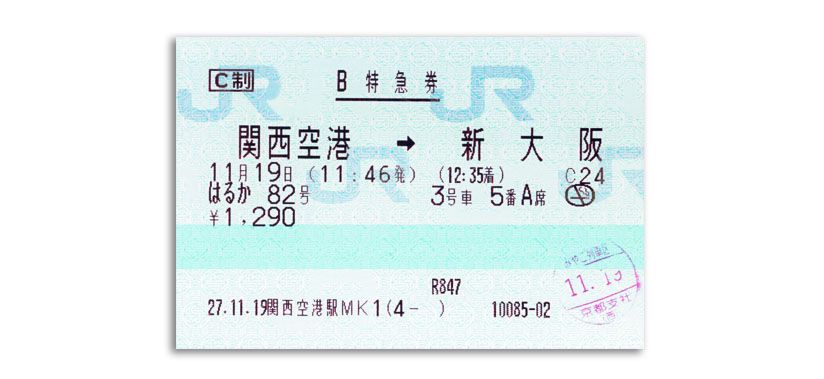
If you purchase a regular ticket and a limited express ticket at the same time, some railway operators will combine the two tickets into one ticket, and you can enter and exit the station and board the limited express train with this ticket
Special Car Ticket
A "special car ticket" is a ticket required to ride a special car. Special cars refer to premium cars with more spacious seats or additional services, equipment and designs. Taking JR as an example, the special car is called "Green Car" (Green Car, グリーン car), which means the same as a business car. Passengers who wish to take the green car must purchase a "Green Car Ticket" (グリーン ticket). At present, "green cars" will be set up on some regular trains, stop trains, express trains, rapid trains, and most of the limited express trains and Shinkansen of JR lines. In addition, some private railway companies have also introduced special cars, such as the first car of the "Mount Fuji View Limited Express" on the Fujikyu Line, the "Super Seat" car on the Nankai Electric Railway Rap:t Limited Express, and the Kintetsu Limited Express. "Deluxe Seat" cars, etc. For the special carriages of the above-mentioned trains, you must purchase a "special carriage ticket" or pay for special carriages.
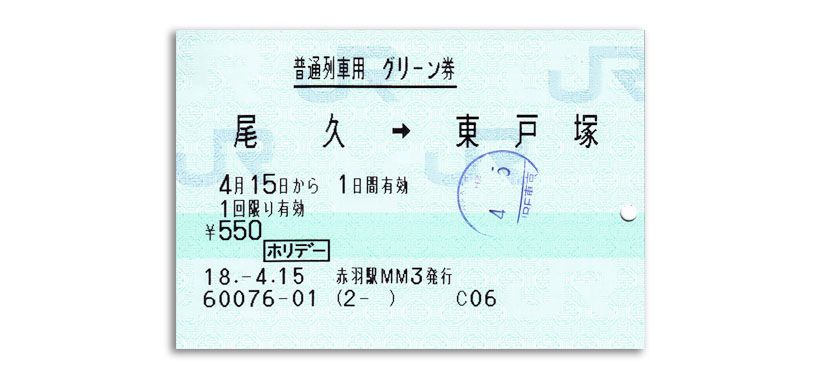
One-day pass/week pass
"One-day Pass/Week Pass" is a discounted ticket that allows unlimited rides on the route of the transportation company within a specified time. Almost all transportation companies in Japan have introduced "One-Day Pass/Ferry Pass" to attract tourists. Due to the relatively small route range of subway, bus or private railway operators, they usually introduce "one-day tickets" to allow passengers to take their routes as many times as they want in a day. For example, the "Toei Pass" issued by the Tokyo Metropolitan Transportation Bureau, the "Osaka One-Day Pass" and "Enjoy Environment Card" issued by Osaka Metro, the "Kyoto Subway One-Day Pass" issued by the Kyoto Municipal Transportation Bureau, and so on.

Because of the large route range and long duration of JR, discounted tickets are usually called "JR Pass" (JR Pass, formerly translated as "pass"). Passengers who hold the "Ride Pass" can travel within one or more days. A limited number of rides on JR routes within the specified range. For example, JR East Japan launched the "JR TOKYO Wide Pass", JR West Japan launched the "Kansai Area Pass", and JR Kyushu launched the "Northern Kyushu Edition Rail Pass" "(Northern Kyushu Area Pass), JR Shikoku's "ALL SHIKOKU Rail Pass" (ALL SHIKOKU Rail Pass), JR Hokkaido's "Hokkaido Rail Pass" (HOKKAIDO RAIL PASS), Japan’s "JR Pass" for all JR routes National Edition" and so on. Since the price of "One-Day Pass/Pass" is usually very cost-effective, part of the "One-Day Pass" and most of the "Exit Pass" are only available to travelers outside Japan. Those who are traveling to Japan, don’t forget to take care of it. use.
Discount Package
"Preferential package" is a package that combines tickets of different transport operators or functions, and is sold at a discounted price. For example, Keisei Electric Railway cooperated with Tokyo Metro and Toei Subway to launch the "Skyliner&Tokyo Subway Ticket" that includes Skyliner discount tickets and Tokyo Subway Ticket; JR West Japan launches, including HARUKA Kanku limited express tickets and ICOCA's "ICOCA & HARUKA discount package" "; Nankai Electric Railway and Osaka Metro have jointly launched the "Welcome to Osaka Package" (a package issued in Osaka) that includes Rapi:t limited express tickets and one-day Osaka Metro and Bus tickets. Since the price of the "discount package" is usually very cost-effective, most of the "discount packages" are only available for purchase by travelers outside Japan. Those who travel to Japan should not forget to make good use of it.
Boarding
Check the ticket on the car
Sometimes Shinkansen tickets are a headache. The ticket office will issue you two or three tickets, sometimes only one. But it's just the same thing. Just put the ticket + express ticket into the gate when entering the gate. The designated seat ticket does not need to be put into the gate, and is reserved for use when boarding the train and checking the ticket. Sometimes, the ticket and the freight are printed on the same ticket, so you only need to insert a ticket to enter and exit the gate.
Get off the bus to make up
If you find that you have bought the wrong ticket during the ride, or you change the destination temporarily, you just need to find the "ticket adjustment machine" (actuarial machine) after getting off the bus. After you put the ticket in, you will directly calculate the difference and put in the required amount. There will be a ticket with no amount on it. Please take this ticket and walk out of the ticket gate as usual.
Hitchhiking etiquette
There are some things to pay attention to when riding a train in Japan. Although there is no mandatory requirement that food and drink are not allowed on the train, most Japanese people still do not do this. It is very rude to get on the train with heavy-tasting food. In addition, please avoid making loud noises or using mobile phones in the tram to avoid affecting other passengers. When going abroad, everyone should try their best to do national diplomacy!
To avoid disturbing other passengers, please switch to silent mode when boarding
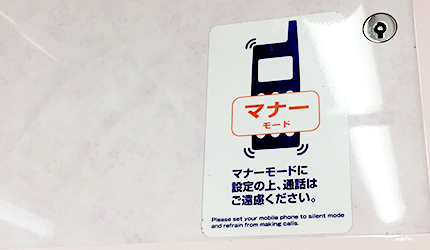
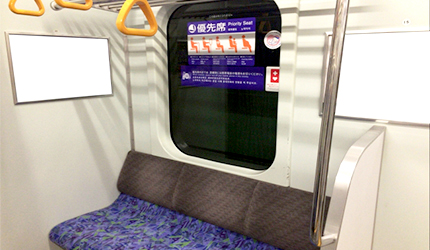
Japanese trams also have fraternity seats, which are obviously different from ordinary seats. Of course, ordinary people can also sit in the fraternity seat, but if you see someone in need, please be polite. What is more special is that some passengers may be equipped with medical equipment. When the car is crowded with people, it is recommended to turn off the power of the mobile phone.
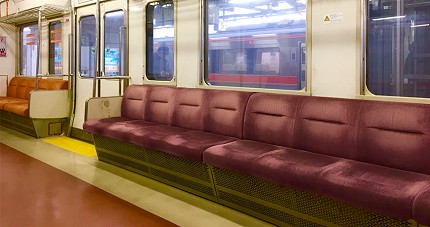
I wonder if you have ever been to Japan in winter? When riding the tram, I felt that there were hot calves under the buttocks, and I felt so fresh when I first found it! Basically in winter, there is heating in buildings and trams. No wonder Japanese girls can wear short skirts even in snow!
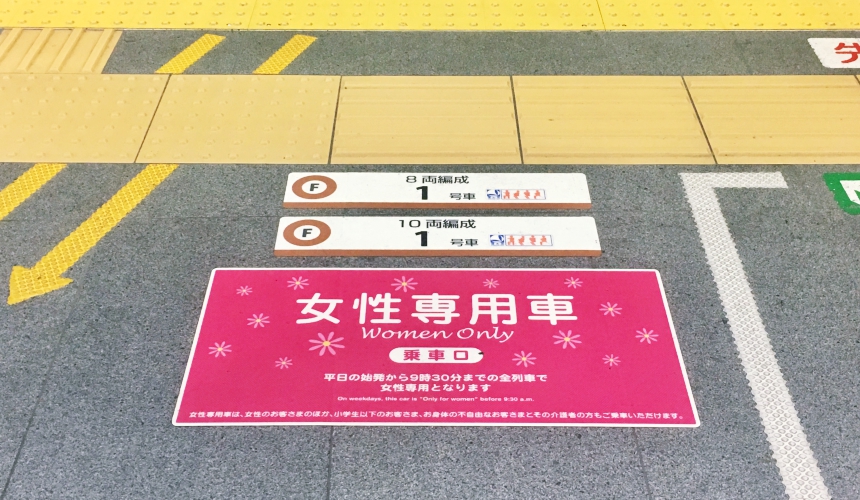
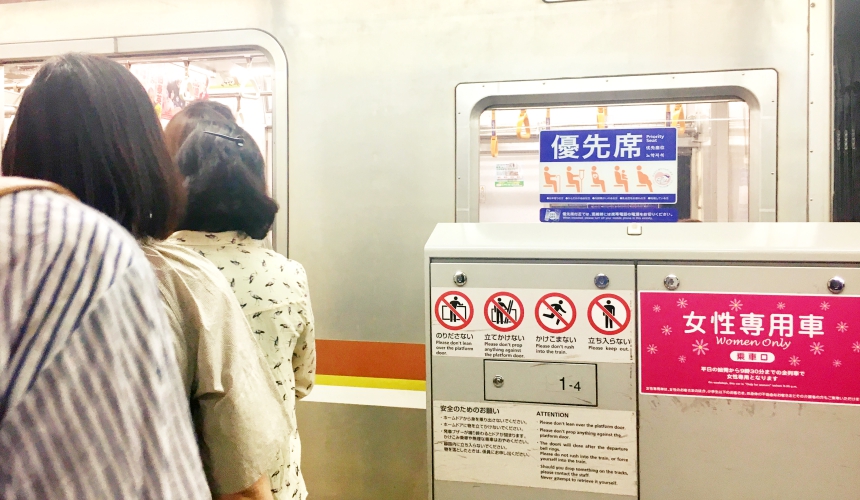
The shocking crowds of Japanese trams have caused many idiot problems. In order to protect the rights of female passengers, "female-only cars" have been introduced. In addition to the large "women-only cars" stickers on the carriages, there are also special markings on the ground of the platform waiting areas. If the boy accidentally gets into the car, he has to endure the strange sight until the next stop...
Note that some women-only carriages are not implemented around the clock, and are restricted to women only during commuting hours when the number of people are the most, or during certain special periods. When waiting on the platform, you might as well pay attention to the words on your feet.
























